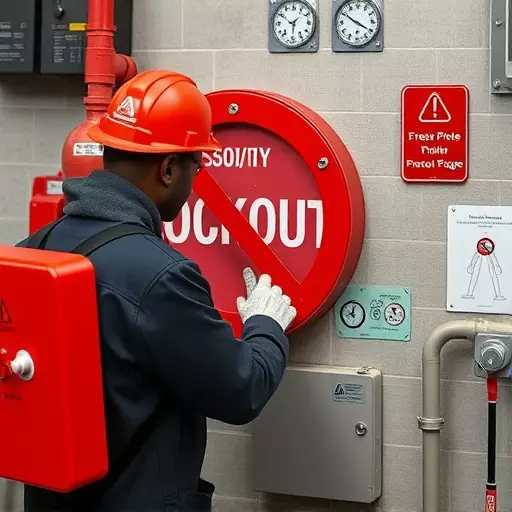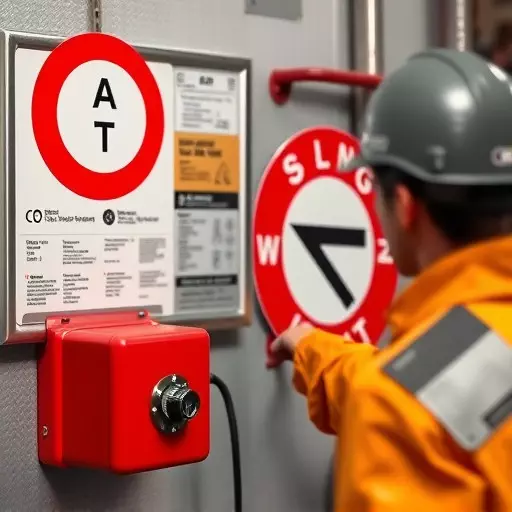Lockout/tagout is a crucial safety measure for industries with energy-intensive equipment, as it prevents uncontrolled energy release hazards during maintenance. OSHA's standards guide safe shutdown practices through lockout tagout compliance training, empowering employees to recognize and manage energy sources. Regular, interactive training covering various locks, tags, procedures, and emergency releases, along with updates on equipment and regulations, is essential for creating a culture of safety and minimizing risks associated with energy control procedures.
Automation is transforming industries, but it brings safety challenges. Understanding lockout/tagout (L/T) practices is crucial for preventing accidents in maintenance and repair scenarios involving energy sources. OSHA plays a vital role by establishing standards for L/T procedures through its energy control regulations. This article explores the importance of L/T compliance training, delving into best practices to ensure worker safety when dealing with automated systems and energy controls. Key topics include OSHA’s lockout tagout standards and effective training methodologies.
- Understanding Lockout/Tagout: A Cornerstone of Workplace Safety
- OSHA's Role and Standards in Energy Control Procedures Training
- Implementing Effective Compliance Training for Lockout/Tagout Practices
Understanding Lockout/Tagout: A Cornerstone of Workplace Safety

Understanding Lockout/Tagout is an essential cornerstone of workplace safety, especially in industries where energy-intensive equipment is a daily presence. This critical practice ensures that when machinery or systems are deactivated for maintenance or repair, they remain off until authorized personnel confirm it’s safe to resume operations. OSHA (Occupational Safety and Health Administration) has established specific lockout/tagout standards to safeguard workers from potential hazards associated with uncontrolled energy release.
Lockout tagout compliance training is vital for organizations to implement effective energy control procedures. Such training equips employees with the knowledge and skills to recognize energy sources, apply appropriate locks and tags, and follow standardized protocols during equipment shutdowns. By adhering to OSHA’s guidelines, companies can minimize risks, prevent accidents, and foster a culture of safety in their workplaces.
OSHA's Role and Standards in Energy Control Procedures Training

OSHA plays a pivotal role in ensuring workplace safety, particularly in industries where energy-intensive equipment is in operation. Their lockout/tagout standards are designed to protect workers from unexpected activation or energy release during maintenance and repair activities. These stringent regulations govern how employees can safely isolate equipment to perform tasks without facing hazardous situations.
The agency provides comprehensive guidelines for lockout tagout compliance training, emphasizing the importance of proper procedures to prevent accidents. OSHA lockout tagout standards dictate that employers must implement effective energy control measures, train workers accordingly, and maintain a safe environment during equipment downtime. Through tailored energy control procedures training, organizations can equip their staff with the knowledge and skills necessary to comply with OSHA regulations, thereby fostering a culture of safety in industrial settings.
Implementing Effective Compliance Training for Lockout/Tagout Practices

Implementing effective compliance training for lockout/tagout practices is paramount to ensuring worker safety in industrial settings. According to OSHA lockout tagout standards, organizations must educate employees on energy control procedures to prevent accidents during maintenance or repair tasks. This training should cover various aspects, including different types of locks and tags, proper usage techniques, and emergency release methods.
The curriculum should be designed to be interactive and practical, allowing workers to simulate real-world scenarios. Regular refresher courses are also crucial as new equipment, procedures, and safety regulations emerge. By consistently updating training programs, organizations can maintain a culture of safety, ensuring that all personnel understand and adhere to lockout/tagout practices, thereby minimizing risks associated with energy sources during work processes.


